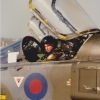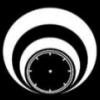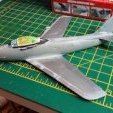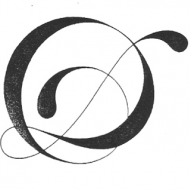Leaderboard
Popular Content
Showing content with the highest reputation on 04/05/22 in all areas
-
I ordered my An-225 from Modelimex in the Czech Republic on February 25th as I wanted to do a Ukrainian tribute build, and the Mriya seemed the best subject I could think of in the "One True Scale". It arrived a month later at my home in Auckland NZ. I estimate that I have put in about 280 hours of work over 40 days straight. To be honest I'm glad to have it finished as it's been a painful build for me, literally, as I'll explain further down. I have made some mistakes, including getting the layout of the striping a little off, and I decided to leave out some of the 650, yes that's not a typo, 650 parts that make up the undercarriage when I realised they would not really be visible. I found the fibreglass components to be easier to work with than might be assumed, but obviously a lot harder than styrene when it came to sanding seams. Some parts fitted well and others not so. For example, 14 of each engine's 16 parts need much filing and grinding to fit. The instructions were not the easiest to follow in respect of the undercarriage which accounts for 66% of the parts. The 32 wheels were the least impressive parts, there being four to a wheel and not fitting well. I didn't fancy cleaning up 128 parts so I used resin replacements by Reskit. I did make a cradle to sit between the rows of main wheels from clear plastic as I did not trust the plastic undercarriage to take the model's weight. I have also now fitted the pitots that I overlooked when taking the photos. I'd rate the decals as some of the best I've used. For those interested, I bought a litre tin of high opacity white car lacquer for NZ$53 sprayed with an el-cheapo car touch-up spray gun (just a big airbrush), compared to 40 or so modelling paint bottles costing $240 I would otherwise have needed. Having built one I could do a much better job on a second one, although in my case I'll apply my knowledge to its little brother I also have to build, Modelsvit's An-124. I underestimated how much I would have to work around the model rather than be seated at my modelling bench. Four spinal surgeries have left me unable to stand for more than a few minutes before pain forces me to sit for a minute to relieve the muscle spasms. So I worked in bursts of 2-4 minutes, maximum, standing bent over a model. The other problem I had with this build is that for most modelling I can brace my arms against my bench to help control my Parkinson's hand tremors and spasmodic jerks I experience, but this build had me standing over the model and working with my arms unbraced. Consequently, there are errors due to uncontrolled movements, plus lots of flaws I have chosen to ignore rather than work standing to fix them. I mention these things because they have led me to accept lower standards than usual. I think to do justice to this kit would need close to 1,000 hours of work and an able-bodied modeller. This is far more time than I can justify for one project as I try to build as many of my kits whilst I still can. As such this is a genuine "3-footer" - that is it's not to be viewed closer than 36 inches (or a little more at one metre), which as it happens, is about the distance needed to take it all in. The model's length is 1,167mm (46") and its span is 1,228mm (48"), which is far too large for any of my existing display cabinets, the largest of which can take a 1/72 scale B-36. So for now I have embedded wire loops in the leading edges of the wings and tail-plane to attach nylon fishing line and suspend it from the ceiling of my modeller's lounge (a room off my office with just display cabinets and chairs), but first I must locate a couple of firm suspension points in the ceiling. That's the plan for now, but yet to be tested. Here it is with some well-known Boeings and a T-72 to the same scale... Well that's Build #12 for the year completed, everything else I have in mys stash, even my unbuilt An-124, seems small! Slava Ukraini!62 points
-
MiG-29GT in Poland with the designation UB Fulcrum Trumpeter 1:32 The model in the MiG-29 in the two-seat version is not often presented on modeling forums. However, I like this version so it hit my workshop.23 points
-
Here's my effort on Modelsvit's 1/48th scale BF 109D. All I added to the kit was an oxygen hose, one lever in the cockpit, the landing gear indicators, the rudder control wires and canopy wire. Painted with Humbrol, Mr. Color and Xtracrylix. Not a bad kit, though the fit in places wasn't the best as some of the parts had a bit of a step in them from the mold misalignment.22 points
-
Here's a build that I finished last month, but have only just had the time to Photograph. This is the Novo 1/72 rendition of the Gloster Javelin. I built this very kit in the 80's straight from the box and painted it in gloss paint as per the instructions. I remember is being an ill fitting kit and once finished looked very toy like. Fast forward to last year and I came across the kit for an acceptable price on eBay. I was overcome by nostalgia and wondered if the current self could bring the kit up to date. For those who don't know, the box is quite weighty for its size. Once opened is apparent why. Flash is everywhere and the sprues are as thick as pencils. Also the mouldings themselves seem very thick. I treated myself to some metal antenna/pointy things for the wingtips and a replacement corrected nose. The kit has been fully rescribed with some pane lines added that were missing. The kit itself went together surprisingly well with the only real problem areas being where the wings connected to the fuselage. The decals were less than useless. Despite my best efforts they just basically turned to dust when soaked. I put a shout out for help and a huge thank you to @Navy Bird for coming to my rescue with the decals I needed to complete the build. I used Vajello model air on the upper surfaces, Alclad 2 for the natural metal underside and finished it all off with a Flory wash. To be honest I'm hugely pleased with the result and it looks magnificent in my display case. Many thanks to all for looking and enjoy the photos.21 points
-
Calling her done. Better than some past efforts, not as good as the kit merits, hopefully I'll improve for the next one.20 points
-
This is the fairly recent ICM Bronco pretty much straight out of the box. Extra additions include the Eduard SPACE cockpit set, seatbelts and wheels. Everything fitted together very well and the large cockpit glazing is very clear. I particularly like the surface detail on the wings. The undercarrige is a little complicated but nicely detailed. It's also slightly wobbly as the parts are so delicate. Just make sure you put enough weight in the nose. I also added some behind the engines just to make sure. Decals are from the Caracal sheet. Thanks for looking. B1 B2 B5 B618 points
-
I tried a shot in the photo booth, but it made it look worse, somehow: PXL_20220504_004844333 by Edward IX, on Flickr PXL_20220504_004902235 by Edward IX, on Flickr I did a last oil pin wash and dull coat, and then took the masks off: PXL_20220504_005958591 by Edward IX, on Flickr Somehow a bunch of dust got in the cockpit on the...well, it's not a sliding hood...flipping hood... PXL_20220504_005901237 by Edward IX, on Flickr Anyhow, I prised it off and a cotton bud wiped it off, so will put it back on when I'm not drinking this terrible margarita mix and take more photos.18 points
-
Continuing with my project to build a fighter aircraft from as many nations as possible participating in WW2, up next is Russia. While most of the Russian WW2 planes don't really blow my socks off from an aesthetic standpoint I've always thought the Yak-3 was a handsome machine. This was my first time building a kit from Eduard and I was pleased with the ease of the build. I generally found it equivalent to the Hobby Boss and Tamiya kits I have built recently. I will say that there is a good bit of difference in complexity and detail in the Weekend Edition kits. I have a Mk. IX Spitfire in the stash and it is night and day different in the level of detail from this kit. I did have a few minor complaints, the doors for the tail wheel had no place to sit so they were difficult to get even. The same for the landing gear. There was no pin and the assembly made it difficult to get both legs aligned properly. The kit was straight OOB other than a few details. I drilled out holes for the guns, drilled holes in the tail and canopy for the antenna wire, and added dividers to the radiator inlets in the wings. The decals are a bit thick but they behaved nicely other than a bit of silvering I couldn't get out. I used Mission Models paints; RLM 74, Medium Gray, and mixed my own blue with RLM78/white/yellow. Wash was thinned burnt umber oil paint and chipping was with a silver pencil. Hope you enjoy the photos (I added a group shot of my recent builds at the end).15 points
-
1/48 spitfires first and last eduard 1/48 Early spitfire. Built OOB, lovely kit, but the decals are abit of a let down. Built as K9797 11th production aircraft built, 19 squadron, crashed april 1939. Airfix 1/48 Spitfire F24, cockpit detailed using left over eduard parts, eduard etched and some scatchbuilding. quickboost uppercowl and exhusts, quickboost prop and spinner and barracuda studios carburator intake. decals from the box and where very nice, found a couple of photos of this aircraft so 'weathered' it to match. Built as VN318, Hong Kong auxiliary air force, crash landed april 1955. thanks for looking15 points
-
I've hinted that this ship exists in my collection when I posted a picture of another ship that had it in the background, so I thought I might as well put some pictures of her on the site for you to enjoy. So this is the Fujimi 1/350 offering of the Japanese carrier Hiryu, one of the six Pearl Harbor carriers that were so important to IJN success and then failure in the Pacific. The kit itself was augmented with Fujimi's own "detail up" kits, there's enough detail in here that I didn't see the need to look elsewhere for more. I also added a few more aircraft than the kit came with - the eagle-eyed among you can probably work it out (even without knowing the ship markings on the fuselage), the less detailed ones are spares from Hasegawa extra's I had. I've taken my usual liberal approach to historical accuracy when it comes to painting (artistic license I'm calling it) and to the aircraft on deck (Japanese doctrine at the time would rarely have had the three aircraft types on deck at the same time), but I'm pretty happy with the outcome, she's a nice looking ship - sleeker than Akagi and Kaga, but not too sleek. Hope you enjoy.13 points
-
Hi all. 2021 was quite a productive year for me but l just found l forgot to share a number of them here on Britmodeller. The first l'd like to show is Airfix's 1/48 Hunter F4. I used a pre-coloured pe set from Eduard, resin seat and new decals from Xtradecal. To make the look a bit more interesting, I added rivets on wings and fuselage. The flaps in the kit lack any detail on th inside, so l scratchbuilt new ones from plastic sheet and rod. The model was painted with MrHobby paints over a base of black primer from Alclad. A wash was made from Abteilung 502 oilpaint and AK white spirit. Thank you for watching.11 points
-
Hi guys, second part of my Falkland Islands war collection to commemorate its 40-th anniversary. This time it's the Argentinian machines that operated from the airfield on Pebble Island until their stay was rudely interrupted by the SAS raid on the night of 14 May 1982 IA.58A Pucara, Airfix kit: Short Skyvan, Airfix kit: T-34 Turbo Mentor:11 points
-
A shed on tracks, which is what I first thought. However this tank has grown on me to become one of my current favourite tanks. This is a 3D resin print of a subject not available in plastic in 1/72. There are 1/35 kits from HobbyBoss, maybe one day... The Vickers Medium mk 2 and its variants was the British Army's main medium Tank during the interwar period. It replaced the Medium Mark C and was in turn replaced by the Cruiser Mk1. The Vickers Medium Mk2 was phased out in 1938 however a few were used as training vehicles at the start of the war and some may have seen some action in North Africa at the start of the war (as pill boxes possibly). If you'd asked me to draw a tank as a kid I may well have come up with something looking like the Vickers Medium Mk 2. Decals are from Dan Taylor, I have an urge to build a few more to use the rest of the decal options. cheers Calum10 points
-
Hello? Anyone there? It’s been a while… Thanks John, Rob and Geoff for the encouragement Col Walter don't worry, we mostly miss. Mostly. So, the last post I made that had any modelling in it was 25th July when I masked the prop tips, then August 18th when I stuck the PE on the wings of Jim’s kit. COVID scare in September when we met the daughter for lunch at Northleach. Negative. Phew. I didn’t tell you about the trip but the pub there is great. We were having a nice lunch in the garden when a noisy exhaust started and a red spoiler appeared over the wall. Pah I thought, boy racer. Well it wasn’t, it was this: Ferrari F40 Nice car if the cockpit is a little basic. Only two seats too. If you fancy one there are some on the web for, oooh, about £2,000,000!! Yikes. First Aid course in October was posted. Then… nothing. So what have I been up to? (Opens Calendar app). Still been doing my Masonic thing, Interviewing Scout volunteers, Scout shooting and the Police Independent Advisory Group but they’re all once a month or less so no excuse there. Then the wedding. I think I told you my youngest wanted to get married in July in Assisi. Can you see why? COVID delayed the wedding more than once so she got married in Bath in July with a small gathering and then we were off to Italy in October for the wedding. Monday to Wednesday event. Hmmm. Booked an Easy Jet flight from Bristol; out on Friday, back on Wednesday. They cancelled the Wednesday flight. OK, let’s make a break of it and go Friday to Friday. Then they cancelled the Friday flights. I guess you get what you pay for. In the end we flew BA from City Airport (a delight), had two nights in Florence and two nights in Sienna before ‘the do’. A great time was had by all, thank goodness. Had my feet tested in November. I’ve had clicky ankles for years and a weak SI which, of late, gives me gyp in my hip and knee if I walk more than a couple of miles or so. Off to the quack to get a referral and saw an ankle specialist who diagnosed flat feet! Apparently old people get this. Fancy tests (3D scan) and custom inserts seems to have helped a bit. We shall see. Our lodge collected for some new night-vision goggles for the Air Ambulance and I went along to see what they were all about The helicopter was out when we got there so we got to go in the Ops room; impressive! Then it came back so lots of piccies. Great trip. I’m very lucky. December - Christmas and all the fun! January - rest. In February younger daughter finally moved into their new house so several weekends lost in moving stuff. Nice to see her settled in a nice house. Storms. I’m pretty relaxed nowadays but in the first we lost a bit of gutter and after the second I found a tile in the drive. The gutter is over an extension so they wouldn't fix it without scaffold. Pussies. You guessed it, £150 for the cast-iron gutter and £750 for scaffolding and labour. Ouch. So when I found the tile in the drive I hung out of windows and couldn't see where it had come from. Aha! I have a drone! My AR Drone 2. Had it for years. So many years in fact that the batteries hold enough charge for about 2 minutes flight. And the software is too old for my iPad. Rats. So, find another drone: DJI Mini SE for far less than the cost of scaffolding for a single tile. That's my excuse and I'm sticking to it. Very impressive drone too. Found the hole and a brave man with a long ladder and voila, as they say in France. I've also trained as a guide for the lodge building which is Bath’s Old Theatre Royal. interesting. However, I've had a hacking cough for the last five weeks and an eye infection so I've yet 'to perform'. Lastly I broke my glasses a few days ago so dug out my prescription (from a few years ago) and hit Amazon. Have you wondered why the glasses are so cheap? Even the £30 ones? Well, I reckon it’s because the lenses are made by apprentices. Some bits are OK but not the whole lens. Serves me right. Eyesight test booked so I’ll but some proper ones soon but in the meantime my posting will be intermittent until I can see what I'm doing. Modelling? Coming up…10 points
-
Today marks 40th anniversary since the Exocet hit HMS Sheffield at Falklands, with damage severe enough that lead to eventual sinking of the ship. This is my little tribute to those tragic events and the lost sailors, drama I was following as kid on evening TV news.9 points
-
pretty nice bubble bath.. Got the belts glued together and dry fit on the seat Also painted the lower half of the 2 piece gun sight.. i have really been struggling to brush paint the small details in the cockpit so I picked up this brush today at my local model shop. first impressions are positive! Forgot to mention in my opening post that I have learned a lot from this site and really appreciate it. Special shout out to @shortCummins who’s excellent WIP thread on a very similar kit, has helped me a great deal. oh and while we are on the topic of forgetting things here is the box art for this build.9 points
-
Hello, This my latest build, made from the SH and the Eduard boxings. Why 2 kits ? Simply because I screwed up part of the first build and, because I never give up and like the type, decided to carry on the build and bought another kit 😬 Pretty good kit, despite some minor inaccuracies with the engraving under the fuselage. I was not fond of the decals as colors are not always well aligned - especially for the stencils. I did peel off the varnish top layer on the decals to get that "painted on" look. This has to be done gently otherwise you might end up tearing off the paint as well. Color scheme is from the Pakistanese Air Force.8 points
-
F-86F Sabre | Fujimi | 1/72 338th Squadron, Royal Norwegian Air Force, 1960's I finished this on 4/10/2022. It was a build 30 years in the making. I built a Heller F-86 with Norwegian markings in High School and it didn't live up to my expectations, mainly due to lack of ability, but also because I didn't have all the supplies available to me now. As a kid the F-86 was my favorite 50's-60's jet and I always pictured it with a mirror finish. So, when I envisioned a Norwegian Sabre build (in honor of my Norwegian heritage), I always pictured it as a mirror "airshow" finish. I bought the decals in the 90's and bought many kits (5 in total) over the years, only to find out they didn't have the correct wing (I am indebted to @72modeler for telling me the exact kit to buy!). The whole tale is in the WIP if you're really that interested in the saga. The finish is Alclad polished aluminum. Alclad's Airframe Aluminum is even more mirror-like, but it almost seemed unrealistic, so I went with the Polished Aluminum. The key to a good reflective Alclad finish is ensuring that the plastic is scratch free and having a smooth, gloss black base coat. I took extra care to make sure that any sanding I had to do (very little, thankfully) was done with fine sandpaper (about 1500 grit) and then polished with Micromesh down to about 6000 grit. I used a Mr. Surfacer 1500 black primer, and then sanded that down to 6000 grit. I finally used decanted Tamiya gloss black cut about 1 part Mr. Levelling Thinner to 3 parts paint and lightly dusted afterwards with straight Mr. Levelling thinner. After the alclad was applied, a protective overcoat of Alclad's Aqua Gloss was hand brushed on. Two more protective coats of Aqua Gloss went over the decals, applied with a hand brush. The different shades of metal were achieved by masking panels, painting a couple passes of alclad, removing the masking and painting a few more passes of Alclad until the contrast was where I wanted it. Since the Alclad is translucent, the dark undercoat shows through making the masked panels a little darker. More details and pictures are in the WIP. The kit didn't come with the correct drop tanks, so I had to swipe the ones from the original Heller build and fix them up. Finally, I had to find a resin Martin Baker ejection seat since this airframe had one. And here it is with the kit that started the whole affair, way back when: Here's the resin Martin Baker ejection seat: I hope you like it! Comments, questions and constructive criticism always welcomed.8 points
-
Didn't get round to taking many progress pics of this build as a couple of other builds raced ahead & got finished first one of which being my infamous Ukrainian Tornado, oh & a certain cartoon rendered MiG-21. Started late last year & used the very nice CMK 1/72 cockpit set which fit the Airfix kit very well. Far better detail than what's on offer in the kit. Decals from the Xtradecal X72308 sheet & paints from the Hataka Red Line RAF paint set No.2. Wheels were the Eduard Brassin resin set. Not sure if RAF Buccaneers had their wings folded especially with items attached to the wings, but the ever helpful artistic licence came in handy. 😉 The obligatory dead parrot pose. 🤣 Thanks for looking, now which shelf of shame build shall I revive? Martin8 points
-
Spitfire FR.XIV TZ164, OI-A, 2 Squadron, RAF Germany late 1940s. This is the Frog F.XIV wing mated to the Hawk F.22 fuselage and a scratchbuilt FR.XVIII-style enlarged rudder. I couldn't manage to make the offset tabs at the rear edge. So they are lightly drawn on. The decals are a mix of home printed and Scale Model Products from Canada. The propblur, as usual, is from artwork by James Perrin. Hard to believe these two types were in service less than 15 years apart! David8 points
-
Wow! What a superb lineup of builds we have going on here! I am humbled and honoured to be in the mix. Here is my WiP for the Cuban Meanwhile, somewhere south of Margaritaville... And a lineup with what I have now on the MIg-21 shelf... Thanks a million folks! Now I must move along. See you around the forum! --John8 points
-
Just a little update on the “Big Vic”, Ive been slowly working my way around the port side and finally plucked up enough courage to tackle the bow openings and weld lines, bearing in mind that the bow is pretty much solid it took quite a lot of laborious drilling and digging, but nearly there now. Classes of Aircraft carriers all seem to have different expressions, so to get the right “look” has taken a lot of squinting at photos and minor re-works, looks about right to me now, though I think I still have to make the stem a bit sharper near the waterline. The walkways under the flight deck overhang are the current headache, I ended up using fine nickel silver wire bent in a jig as a structure which I an cladding with strip to give the right feel, it was just all over the place when I had a first try just in plastic, Im much happier now with the result, and its actually quite robust (famous last words I fear). Getting there slowly, nearly two and a half years now, but there is something very therapeutic about a project like this, the journey is much more important than the destination I feel !! Anyway, I will update when I have made some more progress, onward and upward !!! Cheers David8 points
-
Hello New member checking in. Figured I should start a build thread before I get any further along here. A little introduction, I have a very unique story of how came back into the hobby.. I used to build ships and aircraft as a child at a low level, very recently I have gotten back into it as an Adult . My skill level is novice. For the past few months and for no particular reason I have been reflecting on the many many conversations I had with my grandfather about his time serving as a navigator on a Lancaster bomber..RCAF 419 squadron with a DFC. Here is the Citation “This Navigator has completed 33 operational sorties of which 28 were on the main targets in Germany. Flying Officer Joyner is considered one of the best Navigators that has ever operated with this squadron, and on many occasions whilst returning from a target it has mainly through this officer's skill under hazardous circumstances that the aircraft returned to base. Flying Officer Joyner has always set a courageous example and I consider that his selfless devotion to duty under all circumstances fully merits the award of the Non-Immediate Distinguished Flying Cross.” I have about 1000 more questions to ask him, sadly this is no longer possible. I decided to build the Airfix 1/72 Lancaster as a small memorial. I have it closed up with some primer on it but then got caught in an endless loop of adding filler to places sanding and re scribing panel lines. I could feel my mojo fading so I decided to buy something in a larger scale to work on my skills and re-light the spark. Stupidly I chose this Eduard kit which seems fiddly for a novice like myself. Nevertheless I have been enjoying myself immensely! My wife and her mother took our first and only child (7 months) to Mexico for the week. Needless to say my basement looks as tho a small explosion was set off in a hobby shop.. Here are some pictures of where I am at. I write this from the bath, onceI have finished soaking I will tackle the seat harnesses. Any feedback is welcome, just remember I am not going for strict historical accuracy on this build. Mostly trying to gain some skills so I can get back to my Lancaster. Hopefully going forward I will update this as I progress.7 points
-
or The original 'White van man' of the desert 😎 My second Gecko MW build and equally frustrating and rewarding. Gecko make amazingly detailed kits but they do have their quirks to say the least. Anyway this build was inspired by the classic photo of a Rhodesian photographic unit in North Africa.In particular the driver who does have a certain air of smugness about him. So on to the build. This is an early version with the aeroscreens and is depicted somewhere in North Africa around 1941 and is complete with the Caunter scheme. The driver is a keen fan and amateur driver in the Voiturette class. (This is the rabbit hole for this build, thankfully not too deep!) This was a popular class pre and post war, similar to formula 3 where drivers cut their teeth. He's a driver and takes the opportunity when whizzing around the desert to relive his sporting days back home complete with flying helmet, goggles and white scarf. This is depicted between deliveries and he is reading a few old copies (1939 to be precise) of Motor Sport sent to him from home. You will notice on the bonnet front that he has replaced the Bedford logo with an ERA badge as he is a big fan of the mark who were one of the top teams pre war. If you want to know more about Voiturette racing theres a few sites including Wiki - https://en.wikipedia.org/wiki/Voiturette Here's the build. Forgive the figure, it's my first since I was a nipper and you can see why I don't do them 🙄 The caunter Scheme isn't quite right on the back. There is actually a diagonal paint line up the side of the rear deck however the differences in the AK paints is very minor and disappears once weathered. The engine has pretty much disappeared as well which is a shame. I added a couple of Brass plates which were on the bulkhead. Scratch built aeroscreens as one was missing in the kit and they are way to thick anyway Ooooh! I've just noticed how that '3' decal edge stands out!!! Grrrrrrrrr Slightly startled expression! I left the wires from the broken off side light dangling out the bracket 😁 I laso hand turned the horn which our driver has added God he's awful 🤬 You can only see the difference in paints on the bonnet. Enjoyed this one as well as it was a nice change from SCC15 etc. WIP is here: As always thanks for looking and on to the next one 🤓 Andrew7 points
-
The opening essay isn't ready yet, but I hope to have "Swords of the Unjust" begun this evening. Just some research to finish up.7 points
-
A couple of spots whilst out at work recently. Firstly from the running tests on the traction engines I recently examined, not a bad sight to be greeted with on a Monday morning 😁. And at the other end of the scale I've also recently had the pleasure of visiting Lotus at Hethel, unfortunately (but understandably) you can't take any photos whilst inside the production facility. However when I parked up outside one of the test mules for the new Emira pulled up in front of me. Finally Caterham had their open day last Saturday, I won't bore you with a hundred photographs of different examples (and believe me I could 😁). But the highlights for me was the Highly modified example used on the Grand Tour by James May, a Lotus 7 mark 1 and a Mark 2 (complete with a 1500 Cosworth engine as per the Tamiya model); both absolutely stunning. But the absolute highlight was seeing my car on display in such esteemed company.7 points
-
A long time stash lurker gets revived due to a group build(Mainly so I can crib tips and find lots of info)👍 Laid out in all its glory in my organized and tidy work area................................................ Will be doing the version from 4./KG100 with the high demarcation line and side mottling, Well, That's the plan.6 points
-
6 points
-
Well, it worked. It's not 100% perfect, but it looks pretty decent. I've slapped a bit of Klear over the top to protect it, and here's how it looks:6 points
-
Hi Everyone Thought you wouldn`t mind if I subjected you to some photo`s of my latest completion My attempt at making a `Thimble Nosed` Beaufighter from Tamiya`s 1/48 TFX Kit As usual built mostly from the contents of the box With a few minor additions and improvements Additions include: making a gun camera housing for the top front fuselage from a spare intake from the kit, milliput, wire and crystal clear....... some extra antenna, wind screen wiper, engine cowl braces and what I presume is a `pee tube` near the rear stbd wing root Improvements including : moving the tail trim tab actuators to the underside, drilling out all the gun barrels and little venturii type things on the exhausts. Decals from Xdradecal set X48188 and some of the kits Hope you enjoy the pic`s, thanks for looking Cheers Russ6 points
-
Yes, Poul, it is ! 😎 The new part mesures about 4x4x4 mm, no photos needed, it's the little clone of the first one. So it was time to get down to business: 1/ I've enhanced the kit's part on which is glued the steering box, and on which will be fixed later on the suspension triangles, and the shock absorbers. I call it a "stand" Indeed, its top part was wrong on the left: there was only a small relief, when they are 2 on the real thing. Moreover the more internal relief is in reality a curious part I don't know how to describe. So, I sawed off 2 slots with my jeweler's saw to simulate it, and glued a 1mm section of 1xx mm squared styrene rod. 2/ Then you can see that the radiator does not float on the front of the chassis. It is held in position by two bars, each of which attaches to a curved part of the tubular chassis, not shown on the kit chassis, and which itself attaches, at the front, to the chassis rail and, at the rear, to the "stand" I mentioned earlier. So I made the curved uprights, with a 1 mm styrene rod, shaped them little by little during many blank tests, then glued them on the stand. They will only be glued to the frame rails when the time comes. And of course I also made, with a 0.5 mm brass tube, flattened at the radiator end, the bars that will be glued on the curved uprights. Several photos are more explicit than a good speech: 3/ I've made and re-made several time the tests fitting, between the new steering box and its stand, on the chassis, with and without the front axle and drums , with the upper water cooling line, etc... And I noticed, as you can see on the pictures below, that all went well together, and that the only issue I had to fix is that the left brass tubes of the water cooling line are slightly too short and have a slightly too open angle. This is easy to fix, as the tubes aren't glued, and I can make new ones. Time to relax now, with painting job of these elements, and next, I'll finish the assembly of the brass steering bar I showed you yesterday To be continued 😉6 points
-
Anything like the resumption of standard Ced pre mojo-loss build speed and you’ll produce a squadron in the available time Welcome back old chap. Hope you find you’ve got the building bug again. But if not, then even a Ced comment here or there on someone else's thread will suffice for now. So no, no pressure6 points
-
Thanks, there is also a 1/144 scale kit by Revell. Here is my mate Dimitri's one sat next to my unfinished model last Thursday, April 28 during a group build session in his garage.6 points
-
Well that was a long first day back at work. 🫣😮💨 But look what was waiting for me when I woke up this morning. 🤩 Huzzah! No failed prints and the detail looks good. Washed off in the Mercury. Or (Freddie) Ready for curing. Snipped off and a little bit of a tidy. The alignment of the moving parts got tested. And you know what? perfect. 😇 I might need to use a slightly bigger rod to create more friction but overall the joints “just” work. 😀 Everything was going so well until I noticed the front of the furthest arm looked a little small. Closest bit at the bottom up there. Upon checking it was indeed too small. I’d scaled the whole thing up at the last minute by about 30% guess which bit got left out of the selection. 😫🥺 Never mind a bit more time and a few extra bits made and we’re here. These are the base for the main head light and the wiring panel that lives below. I made extras just in case. you can really see the difference in size of the old and new parts. Also I have an odd anomaly. If you zoom in to the wiring panel the model has holes all the way through to allow me to push wires through. These didn’t print correctly but last time I printed holes in the joints without error. Maybe it’s the orientation? Not to worry though as I can drill them out using the marks as a good starting point. 😀 almost time to try clear resin🫥 will it work? Maybe? Watch this space. All comments welcome. Take care and as always. Happy modelling. Johnny6 points
-
A couple of light coats of clear didn't seem to affect the lustre of the MRP metallics, so I pressed ahead with some decals, which showed up a bit of a weak spot in the kit. The decals are brittle and take some effort to get them to settle down. I used some Daco Strong, which seems to have done the trick with most of them, but the tail band was just too brittle and started to dismantle itself during handling. I measured up and it's 5mm wide and the red stripes are half a mil each, so I'm going to mask and spray it myself, as I gave up on them after a while. I put the main decals on, but left of some of the stencils for now, so they don't get yanked off by tape when I get round to putting the masks on. The shape of the fuselage isn't very helpful, but I'm sure I'll manage in the end6 points
-
Anyways, to all them as I bribed to be nice - the cheque is in the post (promise ) and to them as was just gratuitously nice - aw shucks And to both camps - thank you very much - means a lot - 'specially from such an august bunch (need a Uriah Heep I'm ever so 'umble emoji here ) So. It's been a busy couple of weeks with that horrible intervening thing called work; plus with spare time taken up with (somewhat belatedly) with changing over 12V halogen ceiling recessed downlighters to 240V LED ones. We live in a barn conversion with lowish ceilings downstairs and there are (were) dozens of bl**dy halogen downlighters. 12 in the kitchen alone. And for every dratted one, it means pulling out the spring retained recessed unit - which invariably damages the ceiling plaster meaning filling and re-painting - and taking out the 12V transformer and wiring in the new leads. All whilst perched precariously on a step ladder. Still the environment and my energy bill will hopefully benefit..... Whinge over... But I have done bits and bobs. Tinkered with the design of the canopy internal framing and MDC. Added a frangible link to buttress the central section of the MDC (to give it a bit of strength during handling after the supports are removed): And added a sacrificial base to the two bottom edges of the frame, linked to the frame with a line of 0.2mm rods spaced every 2mm or so thus: The idea being that the printing supports then attach to the sacrificial bases and not the canopy frame, and so (in theory): (i) the sacrificial base suffers all the distortion inherent with closely spaced supports and (ii) I don't have the hassle of trimming away the supports and cleaning up the resultant stubs from the bottom of the frame, but can just run a craft blade along the gap between the sacrificial base and the canopy cutting through the 0.2mm connectors and leaving a nice clean finish. And in practice?....: Worked fine: Such little things please my little mind (sorry). Anyways. I couldn't avoid painting the thing for ever....but could do so long enough to print a quick paint mask to help me spray the cream-coloured-canopy-binding-tape-thingy in the middle without getting any paint on the MDC . So. Printed mask: Printed mask in use: Results: (I used tamiya racing white decanted from a rattle-can; looked a decent match to photos various.) And another printed mask to mask of the tape and the MDC so I could airbrush the frame Nato Black: And then fill-in any bits of frame not reached using a brush and the 50/50 thinned Nato black mixture - almost like a wash. I should perhaps have said that I absolutely hate brush painting - especially fine or delicately detailed bits - I just can't get a neat finish I should perhaps also have said that the raw grey resin looks to my eyes a pretty good match for the plastic grey sheathing around the MDC so no need to paint the MDC (bonus). After the 2 x mask rigmarole: And after detaching the rest of the supports and brush painting: Outside: (nb there's the external framing and cream-coloured-canopy-binding-tape-thingy to go - which I'll probably mask and paint; so that should finish it off neatly). Inside (canopies to be posed opened remember): I need to gently dry brush the frame with some light grey to get the edges and details to 'pop'. It's a good job I printed and painted a few spares; because even trying to be very careful in handling I managed to rip open the MDC on a couple of frames. And whilst I was at it I painted a bunch of coamings and windscreen frames: Remembering ( @Terry1954 ) that the Valley Hawk windscreen had a black/white and not a red frame! I can stick the vac-formed windscreens in the windscreen frames once painted. I'll obvs. have to fill and repaint the bits of the frames where they meets the fuselage - but hopefully won't now have to mask/paint the frame where it meets the clear windscreen. And experimented with drybrushing on a spare valley rear coaming: Details popped nicely (and no visible print lines/striations - so must have lucked in on the best orientation (although to be fair did print a few at different orientations and chose the best for best as it were). So the next task is the paint shop to finish off the frames and coamings before sticking them to the Hawks. BUT before that..... There's that business of the noses being insufficiently curvaceous wot I mentioned a few pages back. Needs to be tackled before sticking vulnerable bits and bobs into the cockpit area. So. As I am a million miles away from having Bill's skill, technique and confidence to slather on 'filler of choice' and file and carve it to the proper profile - it called for some skill-replacing planning. Some may remember that way back on page 148 I designed and printed some profile 'slithers' as guides to help me get the correct curve: So step one. Attach the profile 'slithers': Step two. Mask off the areas that need building up a bit to capture the curves (call that the basic masking): Steps 3 and 4. Further mask off a smaller area just either side of the 'slithers' that will need the greatest depth of filler and give a few liberal coats of Hycote filler-primer from a rattle can: Steps 5 and 6. Move the further masking out a few mm and give a couple more coats of Hycote - and then a final couple of coats of Hycote with just the basic masking. The theory behind the 3-stage masking being that the filler primer is thicker around the slither and tapers away towards the edges - thereby already beginning to capture the 'feathering' required and relieving the muppet that is me of the need to exercise Bill level of craftsmanship achieving the same.... And post-masking: I think the plan is working (although no plan survives first contact with the enemy they say....). It certainly looks a bit chubbier, and seems to have captured the correct sort of curve. It's now up to the muppet with the sanding stick and micromesh to try and refine it.... Gentle filing reveals the slither guide But I'm now going to leave the Hycote to harden for a few days before doing my mini-Bill impression and trying to smooth it down. And that's where matters rest at the mo'.6 points
-
For once a vehicle kit I enjoyed building I couldn't really find much fault with it. Finished in Volkswagen brilliant orange.5 points
-
Hawker Hunter XE 552. This is the 1/32 scale Revell FGA 9, finished as XE 552 "M" of 54 Squadron at RAF West Raynham sometime between 1966 and 1969 when the squadron received Phantoms. I chose that aircraft because I wanted an aircraft in grey/green uppers and silver under and the history of 54 Squadron is interesting. Founded in 1915 in Castle Bromwich it now is part of 1 Group, based at RAF Waddington providing OCU services for the Poseidon and Reaper aircraft used for Intelligence, Surveillance, Target Acquisition and Reconnaissance (ISTAR) The kit was purchased in 1999 when I was “between jobs” and has been waiting in the wings since then. I dug it out earlier this year, you can read the build story here….. I had wanted to fit Matra 155 pods but after an exchange with other members it seems probable that such pods would not have been fitted until after a repaint when the aluminium was replaced by Light Aircraft Grey and the uppers painted in very shiny polyurethane paint with a wrap round on the leading edge. There are photos of a 54 Squadron Hunter taken in 1968 with rocket pods and LAG undersides. In the absence of photographic evidence the outer wing pylons are empty. From this thread I was able to discover the full story of XE552's life. Thanks to all... This is the thread.... XE552 was first delivered to 5MU, Kemble, as an F6, on 26/3/1956, and subsequently issued to 65 Sqn at Duxford, where it was coded "U". It later went to 263 Sqn, then back to Hawker Siddeley Aviation in 1960 for conversion to FGA9. Converted, it went to 208 Sqn as "D" 31/10/61 - 23/2/64, then to 19MU at St Athan (storage or what?) before going back to 208 Sqn briefly, before from mid 1965 to late 1966 serving with 8/43 Tactical Wing at Khormaksar in Aden before being issued to 54 Sqn as "M" in late 1966 or early 1967. Later it went to 1TWU (234 Sqn) at Brawdy, then finally as R to 2TWU / 79 Squadron at Lossiemouth, until it crashed, these are the details... Date: 23-FEB-1981 Time: afternoon Owner/operator: 2 TWU (79 Squadron) Registration: XE552 MSN: 41H/679926 Fatalities: Fatalities: 1 / Occupants: 1 Other fatalities: 0 Aircraft damage: Written off (damaged beyond repair) Location: 20 miles NE of RAF stn Lossiemouth, Grampian, Scotland - United Kingdom Departure airport: RAF Lossiemouth (LMO/EGQS) Some photos for your enjoyment: I'm pleased with this model, the kit is generally considered to be reasonably accurate and captures the look of the Hunter. I'm lucky, I can get close up to XF375 at Old Sarum Airport whenever I want and close inspection shows a few small errors by Revell. Hunters sit low, this is close to a ground eye view.... . Close up to the nose.... Yes, I know the blast tubes are equivocal, they were used to prevent a nose up trim change when firing the cannons, but ofter removed after gunnery exercises. And the back end.... And from a cherry picker basket, looking down....5 points
-
Hi everyone, 4 years after I started this build, I have only just got around to adding the finishing touches and calling it done.. A bit of background: Lopes Hope is a P51C-5-NT that Aircorps Aviation in Minnesota have put back in the air. I was so blown away by the photographic records they kept and the absolute commitment to accuracy they employ that I wrote to them asking for more info about the airframe. I was stunned when their VP wrote back offering to share info, permission to use their photo's in my build log and any support I needed - starting a relationship that flourishes to this day. They are the same guys that host the Aircorps Library which is an incredible online resource offering for a nominal membership fee access to all the factory drawings and manuals for a range of seminal aircraft. Their notes on this P51 and why they chose it echo my own: "Lope's Hope 3rd was a P-51C flown by Lt. Donald Lopez. Donald and Lope's Hope 3rd served in the China-Burma-India theater with the 14th Air Force, 23rd Fighter Group, 75th Squadron. The 23rd Fighter Group was the descendent of the famous American Volunteer Group or Flying Tigers after the US entered the war. Lt. Lopez had 5 victories in China and went on to become a test pilot in the early years of the jet age. Later he was the deputy director of the Smithsonian National Air and Space museum until his death in 2008. Donald Lopez was instrumental in the construction and opening of the National Air and Space Museum. The original wartime Lope's Hope 3rd was a P51C-5-NT, Army Air Force Serial Number: 42-103585. The serial number information was just acquired through the generous contribution of pages from Lt. Lopez's war time log book by his granddaughter Laura Lopez. Normally a WWII fighter's serial number is easily determined by just looking at the tail number. Squadrons in almost every theater of operations number planes this way, but not in China. In China the 23rd Fighter Group's squadrons were assigned a block of numbers for differentiating their aircraft. The 75th squadron's block was 150- 199 (or to 200 depending on source). Lt. Lopez used 194 on both his P-40N s and on his P-51C , Lope's Hope 3rd. Without his log book it might have been impossible to figure out his Mustang's AAF serial number. Our restoration airframe is a P-51C-10NT Army Air Force Serial Number: 43-24907 , that remained in the continental US during WWII and was used for training purposes during and immediately after the war. The decision to paint her in Lt. Lopez's color scheme is intended to honor him and his service to his country in WWII and to aviation all his life." The model started as a 1/18 HpH Desktop GRP shell.. and 1,230 pictures and a lot of work later, it looks like this.. I really enjoyed this one... it spoilt me though, having every drawing of every part and great references from the restoration meant i could just build everything i saw in front of me - that collection of hundreds, if not thousands of parts resulted in I think my best model. It is certainly a more complex aeroplane than the Spitfire I made, for example the gear bays on this were about 3 - 4 months work, on the Spit a week or two, there is virtually nothing in it's bays 😀 I hope you enjoy it and all my thanks to Aircorps and everyone who chipped in with encouragement in my build thread until next time Peter5 points
-
I added a second MFH 1/12 to the stash. It's going to be a while before I start it. Thought I'd share the statutory box etc. pics to get the thread started. Link to MFH website: https://www.modelfactoryhiro.com/SHOP/K742.html Instructions, decals and PE in a plastic folder on top of contents Nicely protected with bubblewrap Bags of resin parts on top Then the stretch-wrapped 'bag-o-bits' at the bottom along with the tyres.5 points
-
Two things I'd like to say right off the bat. One, I did not do this kit justice. And two, wow this is the best engineered and best detailed aircraft kit I have personally ever built. It is a jewel. The cockpit alone is crammed full of detail and has plenty of options depending on which specific Mk.Ia Spitfire you choose to build from the kit. There are several parts and panels you can wait until the model is entirely finished before installing, the fit is that good. 20220501-MJS_5346 20220501-MJS_5389 20220501-MJS_5374 While this kit is incredibly good, it did prove to be a bear of a build but that was no fault of Tamiya. 20220501-MJS_5440 The first issue I had concerned the seat harness. I built and painted the photoetched harness supplied by Tamiya and was really proud of how well it was looking. All I had left to do to complete the cockpit assembly was glue the finished harness onto the painted seat. Unfortunately as I was pressing the harness down onto the seat I accidentally flinched and caused the super glue to smear over the seat. The harness was now glued to the wrong spot and there was a big smear of glue on the seat. To fix my clumsy mistake I had to remove the harness supplied by Tamiya which naturally ruined it. And then the seat could be stripped of the excess glue and then repainted. With the Tamiya harness now ruined I needed a replacement. I purchased a sutton harness from HGW. The detail was good but definitely trickier to assemble than the Tamiya item. And while the HGW belt material does have some flex, it is still a pretty delicate item. I was being very careful trying to assemble the harness but it tore along the series of laser cut holes. I really don't know how I could have been more careful to avoid this happening. I messaged HGW and they offered to send a free replacement right away so I was pretty happy with their response. Unfortunately after a few months, nothing had arrived. I eventually chose to purchase a second harness from HGW and very frustratingly, it tore in the exact same place again. I decided to try and repair the torn harness. I glued the harness to some very thin metal foil. This would be thin enough to hide and retain some flexibility. Once the cockpit was finally done the rest of the construction went incredibly easily. Again, the fit of the parts was near perfect and only the bare minimum of seam filling was needed along the top of the engine cowl. I did lose some of the fastener detail while sanding which I replaced with some 0.88mm diameter rod which I then hollowed out with a 0.4mm drill. 20220501-MJS_5259 The pitot tubes are very delicate on the early Mk.Ia Spitfires. This is nicely represented by Tamiya but I felt I could do better so I sliced off the pitot tubes and replaced them with some stretched sprue. 20220501-MJS_5286 Other modifications I made were repositioning the rudder and elevators. The tail wheel was also turned to the right and a thin steel wire inserted into the tail wheel strut to maintain its strength after the modification. Lost rivet detail on the tail strut was replaced with Archer 3D printed rivets. The solid plastic tail light was cut off the rudder and replaced with clear stretched sprue that was shaped with sanding sticks and then cut to length. 20220501-MJS_5274 My goal with this build was to represent an aircraft that had only acquired a few hours of flying time on it so I figured my best bet was to study some recently restored Spitfires. The exhausts showed a lot of interesting subtle tones and colours which I tried to represent here. The kit exhausts have excellent detail and shape but are molded solid. It was challenging due to the shape but I used an exacto blade to very carefully hollow out the exhaust pipes. 20220501-MJS_5269 Looking at references, the exhaust residue colour is close to Tamiya buff or deck tan which was airbrushed on then complimented with some pigments. 20220501-MJS_5304 The wheel down indicators, external gun sight and small nut on the tip of the spinner were all made from stretched sprue of varying thicknesses and shaped as needed. I even used very thin stretched sprue to make brake lines mounted to the main gear legs. 20220501-MJS_5340 After the struggle that was the seat harness, everything was pretty smooth sailing until I got to painting which proved to be an even bigger headache. The Spitfire was built over the course of the last two and a bit years so some of my memories are a little vague. I began by priming the model and spraying Vallejo Aluminum on the lower surfaces. The aluminum was masked off and I began painting the upper surfaces. The masking was then removed and big sections of aluminum paint went with it. All the external paint was stripped, and I chose a different aluminum but again, I had large sections of the paint come off. My third attempt to paint the Spitfire started by painting the upper surfaces but when that masking was removed, more paint came off. 20220501-MJS_5324 The fourth and final attempt was thankfully uneventful. The previous paint had been stripped and the model cleaned thoroughly with alcohol and primed with Tamiya grey. This was allowed to sit for a solid month before tackling the aluminum which this time was Vallejo silver 77.724. The upper surfaces were painted Tamiya XF-52 Flat Earth but that looked a touch too dark so I went over it with Vallejo Dark Earth 71.323. Blutack was used to mask the camo pattern and Tamiya XF-81 Dark Green 2 mixed with a small amount of XF-67 NATO Green went on. The blutack came off with no problem and I could finally move onto the gloss coat. 20220501-MJS_5453 That whole painting saga actually took place over a span of about six months or so as each failure was rather demoralizing. And with covid in full swing at the time, it's not like there were any model shows to take it too. I would normally have spent a fair bit of time post shading but again, this is meant to look like a pretty new airframe so that would have been inappropriate. I honestly can't remember if I forgot to clean the model of dust prior to painting (the model had sat for a few weeks after its final coat of primer but it was covered) or if the top colours weren't thinned enough as certain areas came out with a rather rough finish. After so many earlier failed attempts at painting I really wasn't in the mood to try painting the model AGAIN. I said to myself screw it and chose to simply press on. I just wanted this thing to be done. 20220501-MJS_5458 I used Pledge (formerly Future) clear gloss to prep for decals. I must admit, after all the issues with the seat harness and painting I had been borderline throwing the model away several times. I decided at this point, even with its flaws I just wanted the model to be done so I could move on. I sprayed one rather heavy coat of Pledge, let it dry and began applying decals. Admittedly, this was a mistake as the surface was really not glossy enough for the decals which is why you will notice a fair amount of silvering. I had initially planned to only use the small decals included and airbrush on the larger markings using custom vinyl masks. But I was still rather paranoid about masks potentially lifting off paint so I chose to only use decals for the markings. 20220501-MJS_5472 With a crudely repaired seat harness, rough camo paint and silvered decals, it was time to start the final weathering and assembly. A dark grey wash was applied to a few inspection doors and the panel lines that outlined the flaps and flight controls but that was it. I wanted to keep the panel lines subtle. 20220501-MJS_5488 Oil paints and pigments were used to simulate a small amount dirt and grime from flight and ground crews walking along the wing roots. Again, trying to keep the aircraft looking pretty new. 20220501-MJS_5490 The model was placed on fine sand paper and the sand paper gently moved back and forth to flatten the bottom of the tires. Later I managed to lose the light that sits just behind the antenna mast while trying to install it. Thankfully I saved the leftover clear sprue from a Spitfire build from well over a decade ago which still had that piece I had lost so chock up another win for the spares box. 20220501-MJS_5491 The only other adventure I had involved the windscreen. When I removed the masking from the windscreen I saw to my displeasure that at some point the masking I used to protect the inside of the windscreen had lifted just enough to allow some paint in. It was pretty prominent but to be honest since the model was already a disappointment (again, that's on me, not Tamiya) I wasn't going to fix it. But after a few days it started to really bother me and I decided that even though the model was virtually done I elected to remove the original windscreen and replace it with the second one included in the Tamiya kit. The new windscreen was quickly faired in with some milliput and the windscreen once again masked and painted. I should add that while using water to help smooth out the milliput around the replacement windscreen some of that putty water began to stain the paint. I rushed the model to the sink and washed it off. Unfortunately washing the model caused some of the Tamiya clear flat to come off which is why you see some silvering in some odd areas like over the roundels on the wings. It was one adventure after another! 20220501-MJS_5506 Let's see, what else. I removed the molded on door release handle and made a new one from styrene. And I had scratchbuilt the handle mechanism you see inside Spitfire canopies to slide it open and closed. Turns out while it looked the right size when I was making it, but turned out to be fractionally too big and wouldn't fit when the canopy was installed in the open position. Oh well. 20220501-MJS_5520 20220501-MJS_5528 Based on footage I have seen of Spitfires from the time on YouTube, they seemed to operate from grass field runways but were maintained on concrete aprons. To replicate this I lightly weathered the tires with some old medium brown looking pigment from Mig. Then I took a cotton swab and ran it along the middle of the tire to show where the dirt had been worn off when the aircraft was moved across the concrete apron. 20220501-MJS_5529 I had planned to add the three antenna wires to the model but after such a problematic build I just wanted the model done. So I simply omitted them. 20220501-MJS_5536 There were other problems that cropped up and a few other mods I made but I covered the main ones. Not sure if what I wrote made any sense, it was tricky trying to write the key points down only after the model was done and after so much time had passed since I had begun building it. 20220501-MJS_5538 So what I initially thought would be a quick build back in June of 2019 would wind up being one hell of a roller coaster and I didn't finish it until the end of April 2022. And while it did come close to being chucked in the garbage several times, I'm glad I chose not too. I can't stress how much I learned building this model. From all sorts of problem solving to my first real attempts at scratchbuilding several small parts, even though they didn't all make it onto the model. And despite all the flaws (most obvious being all that silvering) I'm honestly surprised it turned out as goods as it did! 20220501-MJS_5540 Now that the Spitfire has been finally completed I will get back to the M4 Sherman "Thunderbolt VI" I have going in the armour section. Thanks for looking. -Matt5 points
-
I wasn't very happy with the surface of the wings especially, and the fuselage sides to an extent too. I know this is a well-worn machine, but some of the gritty bits would have been almost as big as golf balls! I attacked it with one of those skinny Galaxy Model sanders, wet sanding it and avoiding the decals, as they're not protected yet. It might have been a better idea to do it after a coat of clear, but I didn't want to increase the texture any further, and I'd started before it occurred to me, so I just carried on. Here's what she looks like now, covered with dried up sanding dust. I'll take it indoors and wash off the mess shortly, and see how it looks.5 points
-
So where are the B-17s? On the bench, where I left them, obviously. So I need to re-read my posts and get my head (back) around these: Going out tomorrow but I feel some mojo returning so hopefully some progress soon. We're probably handing over the models next month so no pressure…5 points
-
Just picked this one up from a well known auction site at a very reasonably price when I look at what they retail for currently. I've recently developed an interest in auto modelling whilst building a 1/32 Chevrolet Impala for a Grandchild. This has caused me to dust off a half built Revell 1/24 Cobra and start to take a serious interest in Spot model and a few other Model Auto sites. Quite infectious it seems. I only bid on this one as it looked so incredibly cheap vs the retail price, and I was surprised to win! Certainly looks like a very interesting, if not a tad challenging build! Still, it will make a change from aircraft and AFV's.........🤪 When I do pluck up courage to build it, I'll start a WIP as I'll need lots of input from you Auto folk! Terry5 points
-
We should be doing quite well for ourselves, as ordering seven kits drops the price to just a hair under 19 euros per kit. I'll happily eat shipping, since two more kits doesn't change what I'd be paying anyway, and you two can come visit me like I'm some eastern potentate in Hedgehog Manor Mk II, which is less than a mile south of Hedgehog Manor Mk I. Everyone wins!5 points
-
Thanks for the kind comment @Toftdale and @Spiny Well, solution adopted. I've designed, inspiring me from Mercedes Benz Ref photos, a steering box, which is currently 3D printing. Because of very thin details, I've decided to print it with layers of 0,01 mm, and it will take more than 3 hours. Not sure the proportions are good , but once printed, I could see wether it fits at its place or not, and wether it looks oversized or not. The drawing (without pretense, I don't have the skills of @nick, to name but one ) The rendering: See you later with the printed parts5 points
-
A few pics of my latest build, a Belgian Air Force Sea King Mk.48 based on the 1/72 Revell kit and using the excellent decal sheet from DACO Products. For me, the Belgian scheme is one of the most attractive Sea King schemes out there. I really like the combination of the bright orange with the sand and spinach camouflage. Matching the green was straightforward. I used MRP-376 which is their version of Olive Green BS220. Matching the sand was more of a challenge. Following some exchanges with @janneman36, @825 and @thorfinn, I finally went for Xtracolor X813. This is actually an armour colour that I used c.15 years ago when building a Gulf War Challenger (BS361 Light Stone). Despite its age, it sprayed very nicely. Finding a good match for the Dockerblaze orange was also challenging. After various trials with Humbrol and Tamiya, I opted for an automotive colour from Zero Paints in the end: ZP-1057 Jägermeister Orange. I had to scratchbuild the radar at the left of the cabin. It's not 100% accurate, more representational than anything but "good enough and done" is the right way forward. I cobbled it together from 2 balls of Milliput, a Little Cars lens and some plastic card. All in all, it was quite an involved build and I am pleased to have got this one over the finishing line. The Revell kit still holds its own despite being over 20 years old. I actually like the raised rivets and the subtle surface detailing. The kit goes together well and is sharply moulded. Cheers Richard C.4 points
-
On the basis that it was a horrible job, and if I didn't do it immediately I'd never do it, I thought up a method to get a consistent 5mm unmasked area on the tail, which is all sorts of shapes. I laid down a 1mm strip of tape where I figured the aft edge would be, then cut up the remaining 5mm piece into short lengths and laid them over the top of the 1mm piece, as trying to put it on in one piece would just end up with it running off in all directions. once I'd done that, I cut some 2mm(ish) lengths of tape and butted them up to the forward and aft edges, then removed the 5mm wide sections and the 1mm strip to leave a decent 5mm wide gap. I added a load more tape to the edges to cope with overspray and dug out some Alclad white primer. A clean airbrush is a good airbrush, so I stripped my PS-770 and set about painting the stripe. It didn't take long, but I took care to do it as dry as possible to avoid masking leaks and runs, then with my heart in my throat I removed the masking. The results will shock you! If you're wondering where the red borders are, I remembered I had some Fantasy Printshop decal stripes, and they have 0.5mm stripes in red, so I'm going to give those a go. I'm using the dark(ish) red stripes, on the basis that being laid on white will make them a little lighter. Wish me luck!4 points
-
Thank you very much to all, really motivating of course... Today the beginning of a long way, hard but a passionate one! Ladies and gentlemen I introduce an Indian's fork: The Guiloy's one was not ridiculous, but _ are you surprised?_ I want be closer to the real thing... First step: Easy? Not really, To maintain this kind of piece in a vice, it's not evident. All the holes must be in the same parallel axel... I said it's the beginning! Dan.4 points
-
Bit of drybrushing with ocean grey enamel has helped highlight the structure to lend interest. Ready for a clear coat. Then a jet black pin wash might help too... Then I can snip away the little frangible links helping support the MDC - and think about the best glue to use.....4 points
This leaderboard is set to London/GMT+01:00

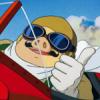


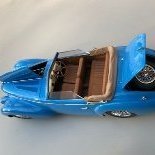
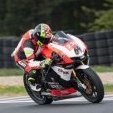

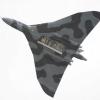

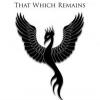
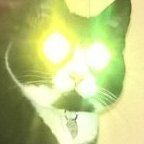
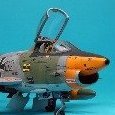
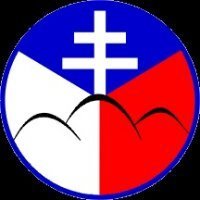




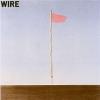
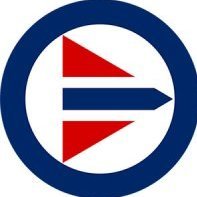
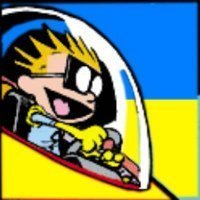
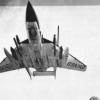

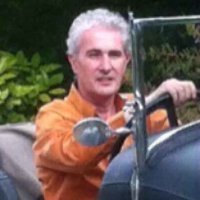
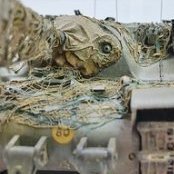
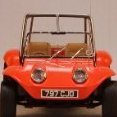


.thumb.jpg.d17ff607fc7e89ed057e63fcb6f2a888.jpg)
